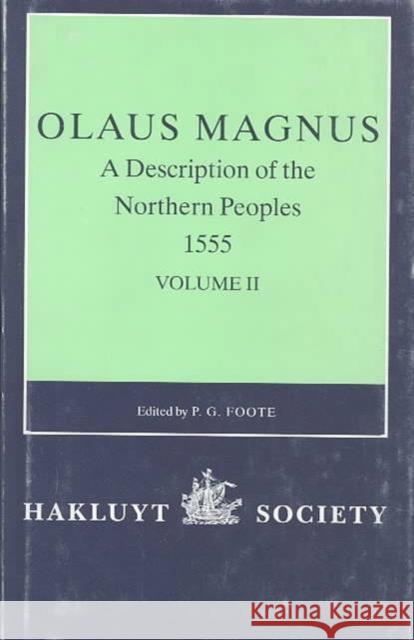Olaus Magnus, a Description of the Northern Peoples, 1555: Volume I » książka
Olaus Magnus, a Description of the Northern Peoples, 1555: Volume I
ISBN-13: 9780904180589 / Angielski / Twarda / 1998 / 488 str.
The Swedish scholar and prelate, Olaus Magnus (1490a 1557), last Catholic archbishop of Uppsala, lived the latter half of his life in exile. His devotion to his country and his people never faltered, nor his determination to give them a glorious place on the European cultural map by his writings. On his justly famous Carta Marina, published in Venice in 1539, he promised a fuller account of the North and its marvels. This he accomplished in January 1555 when he issued from his own press in Rome his magnificent Historia de gentibus septenrionalibus. This quarto volume of 815 pages, divided into 22 books and a total of 778 chapters, was lavishly illustrated with some 480 woodcuts, most of them closely relevant to the technical matters discussed by the author. The book was an immediate success, and half a dozen editions appeared in the century after Olausa s death. It became even better known in an epitome published in Antwerp in 1558, which was also frequently reprinted and translated. This appeared in English in 1658, but it is only with the present version, complete with illustrations, that the whole work is made available to the English-reading world. It is indeed only the second full translation to appear in modern times, preceded a Swedish version published in four parts between 1909 and 1925. There is little history in the sense of chronological narrative in Olaus Magnusa s Historia. It is rightly regarded as an ethnographic essay on an encyclopaedic scale, touching on a vast variety of topics, snowflakes and sea-serpents, elks and artillery, sables and saltpetre, watermills and werewolves. Much of it was culled from ancient authorities- it was a matter of patriotic pride to identify the Swedes as the only legitimate descendants of the Goths- but much of it was derived from the authora s personal observations, especially those made on his early travels in North Sweden. His pioneering and sympathetic account of the Lapps and their way of life has attracted particular attention. Olaus Magnusa s immense store of fact and fantasy (much of the latter drawn from the writings of respected predecessors) remained the chief fount of knowledge about the North for 200 years; and modern scholars, not least in the fields of material culture, social history and folklore, must still turn to the Historia as a prime source of information about conditions and beliefs in pre-Reformation Sweden and Scandinavia as a whole."











